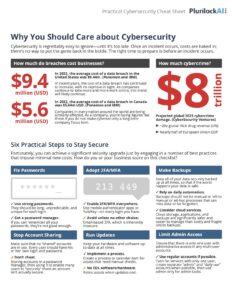Deep Dive into Lateral Movement in Cybersecurity: Understanding, Significance, and Analysis
In the ever-evolving landscape of cybersecurity threats, organizations face a constant battle to safeguard their digital assets and data. One of the most potent and stealthy tactics employed by cybercriminals is lateral movement. Lateral movement is a sophisticated maneuver in which threat actors pivot through a network, seeking to escalate privileges and access sensitive information. This deep dive explores what lateral movement is, why it matters in cybersecurity, and provides an in-depth analysis of its importance in the context of modern cyber threats.
What is Lateral Movement?
Lateral movement refers to the techniques and tactics employed by cyber adversaries to navigate laterally within a network, moving from one compromised system to another. This lateral traversal aims to maximize the attacker’s control, escalate privileges, and ultimately reach valuable data or systems. To understand lateral movement, it’s essential to delve into its key components:
1. Initial Compromise:
Lateral movement typically begins with an initial compromise, such as phishing, exploiting vulnerabilities, or employing malware. Once an attacker gains a foothold in the network, they seek ways to expand their control.
2. Reconnaissance:
Before moving laterally, attackers conduct reconnaissance to identify potential targets and vulnerabilities. This involves mapping the network, identifying system configurations, and gathering information about user accounts and permissions.
3. Privilege Escalation:
To achieve their objectives, attackers often require higher-level privileges than what they initially possess. Privilege escalation techniques are used to gain administrative access or other privileges that allow for greater control over the network.
4. Lateral Movement Techniques:
Attackers use various methods to move laterally within a network. Common techniques include:
- Pass-the-Hash (PtH): Exploiting hashed passwords to gain access to other systems.
- Pass-the-Ticket (PtT): Leveraging Kerberos tickets to move laterally.
- Exploiting Trust Relationships: Taking advantage of trust relationships between systems or domains.
- Remote Desktop Protocol (RDP): Using RDP to control other systems within the network.
- Use of Malware: Deploying malware that propagates through the network.
5. Data Exfiltration:
Once the attacker gains access to valuable resources or data, they may initiate data exfiltration, which involves stealing sensitive information and transmitting it outside the network.
Why Lateral Movement Matters in Cybersecurity
Lateral movement is a critical aspect of cybersecurity due to several reasons, each highlighting its significance in protecting digital assets and data:
1. Evasion and Stealth:
Lateral movement techniques are designed to be stealthy and evade detection. Attackers aim to blend in with legitimate network traffic and activities, making it challenging for traditional security measures to detect their presence.
2. Privilege Escalation:
Through lateral movement, attackers can escalate their privileges, gaining access to highly sensitive areas of a network. This allows them to exfiltrate critical data or disrupt operations effectively.
3. Data Theft and Breaches:
Lateral movement often precedes data breaches, enabling attackers to access and steal valuable data. Data breaches not only result in financial losses but can also damage an organization’s reputation and trust.
4. Persistence:
Attackers seek to establish persistence within a network, ensuring continued access even after initial compromise. Lateral movement is a key enabler of this persistence, as it allows them to move freely and maintain control.
5. Advanced Persistent Threats (APTs):
Many APT groups employ lateral movement as a fundamental tactic in their operations. APTs are typically highly organized and well-funded, making them a formidable threat to organizations.
6. Compliance and Regulatory Requirements:
Compliance with data protection laws and regulations, such as GDPR or HIPAA, requires organizations to protect sensitive data and report breaches promptly. Lateral movement directly impacts an organization’s ability to meet these requirements.
7. Damage Mitigation:
Understanding lateral movement is crucial for effective damage mitigation. Detecting lateral movement early in an attack can help security teams respond proactively and prevent further damage.
In-Depth Analysis of Lateral Movement Importance
To fully appreciate the importance of lateral movement in modern cybersecurity, let’s delve deeper into specific aspects of its significance:
1. Evasion Techniques:
Lateral movement often involves the use of evasion techniques that challenge traditional security measures. Attackers may use encryption, obfuscation, or legitimate tools and protocols to avoid detection. This necessitates the use of advanced threat detection and response solutions capable of identifying suspicious behaviors and anomalies within network traffic.
2. Insider Threats:
Lateral movement isn’t solely the domain of external threat actors. Insider threats, whether malicious or accidental, can also leverage lateral movement techniques to access unauthorized resources or data within an organization. Detecting and mitigating insider threats requires a combination of user behavior analytics and robust access controls.
3. Attack Surface Expansion:
As organizations adopt more complex network infrastructures, cloud services, and interconnected systems, the attack surface expands. This broader attack surface provides more opportunities for lateral movement. Proper network segmentation, zero-trust architectures, and continuous monitoring are essential for reducing the risk of lateral movement.
4. Zero Trust Security Model:
The concept of Zero Trust has gained prominence in recent years, emphasizing the need to distrust both internal and external actors until they can be authenticated and authorized. Lateral movement challenges the traditional notion of trust within networks, making Zero Trust principles a critical component of modern cybersecurity.
5. Automation and Threat Hunting:
The use of automation, machine learning, and threat hunting practices has become crucial in detecting and responding to lateral movement. These technologies enable security teams to identify suspicious patterns and behaviors quickly, reducing the dwell time of attackers within a network.
6. Industry-Specific Considerations:
Different industries face unique challenges related to lateral movement. For instance, the financial sector must protect transactional data, while healthcare organizations must safeguard patient records. Understanding industry-specific risks and regulations is essential in mitigating lateral movement threats effectively.
7. Third-Party Risks:
Third-party vendors and service providers often have access to an organization’s network. Lateral movement can extend into these external entities, making it necessary for organizations to assess the security posture of their vendors and establish controls to prevent lateral movement through third-party connections.
8. Human-Centric Approach:
Recognizing that humans are often the weakest link in the security chain, organizations must invest in cybersecurity awareness training and employee education. Human-centric security strategies can help prevent successful lateral movement initiated by phishing or social engineering.
9. Incident Response:
Lateral movement is a critical phase in the cyber kill chain. Effective incident response plans that include containment, eradication, and recovery strategies are essential for minimizing the impact of lateral movement and preventing its recurrence.
10. Continuous Improvement:
The cyber threat landscape is constantly evolving, and attackers adapt their tactics accordingly. Organizations must adopt a proactive approach to cybersecurity, continuously improving their defenses, monitoring strategies, and response capabilities to stay ahead of evolving lateral movement techniques.
Conclusion
Lateral movement is a pervasive and insidious threat in the realm of cybersecurity. Understanding its intricacies and importance is vital for organizations looking to protect their digital assets, data, and reputation. As cyber adversaries become increasingly sophisticated, the ability to detect, respond to, and mitigate lateral movement attacks will play a pivotal role in an organization’s overall security posture. To succeed in this endeavor, organizations must adopt a holistic approach to cybersecurity, combining advanced technology, human-centric strategies, and a commitment to continuous improvement. Only by doing so can they hope to stay one step ahead of the evolving threat landscape and safeguard their digital future.











